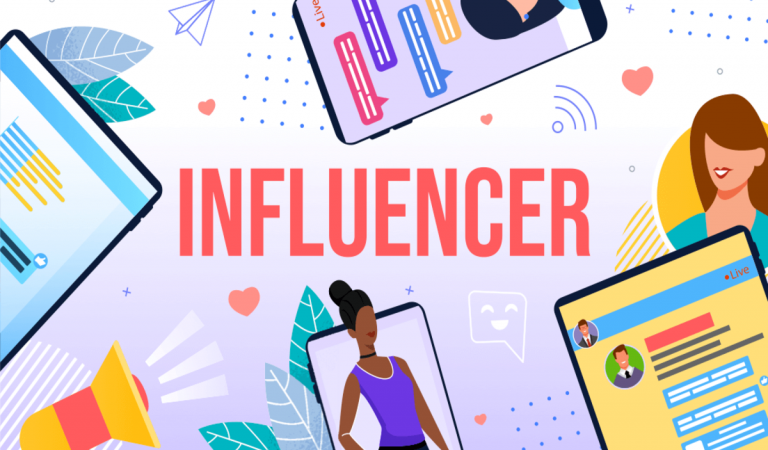Different types of influencers: mega, macro, micro and nano
We’ve all heard of influencers, but do you know how the different types fit in? And which one would be the best fit for your brand?
For easier decisions on choosing an influencer for your brand, we’ve put together this guide to influencer marketing, defining mega, macro, micro and nano influencers.
So what is influencer marketing?
Your first question may well be, “So what is influencer marketing?”
The simple answer is using people with influence on social media channels to help sell your product or brand.
There are influencers in literally every industry niche out there ranging from health products to the auto industry to beauty products, and all of them have built up a substantial following through their own social media platforms.
This means that companies that partner with influencers allow them to tap into the amount of trust that influencers have built up with followers to further market brands, goods and services. Any product recommendation from an influencer almost serves as a form of a social endorsement.
While influencer-brand partnerships, in general, can help with your marketing efforts, influencers themselves can actually be categorised into different types each with their own advantages – let’s take a closer look.
Mega influencers
A mega influencer is someone who has more than 1 million followers on their social media channels.
They are more likely to be famous A-list celebrities on social and in real life for talent in their own right rather than for being a mega influencer (Think singers, actors or even sports athletes).
Beyonce, for example, has well over 150 million followers and is arguably one of the most valuable celebrities on social media. In fact, a social media report by D’Marie Analytics estimated that a single post by the queen of socials is worth $1 million in advertising value.
Other people such as Cristiano Ronaldo or Kevin Hart have millions of followers are all good examples of mega influencers.
Strength: Mega influencers are best suited to mega brands who can afford their price. Remember that they have a broad diversity of followers. So, if your product is very niche, then a mega influencer may not be the best option.
Macro influencers
Next stop is the macro influencer. These social media experts tend to have between 100,000 and 1 million followers.
They differ from mega influencers by having achieved fame mostly through internet-related activity, such as vlogging or producing a specialist blog. So they are considered to be experts in their field, whatever that may be. A classic feature of a macro-influencer is their ability to produce new content regularly and for a majority of these people, their social media platforms have become a full-time job.
An example of a macro influencer is Whitney Simmons, a fitness Instagrammer with 925,000 followers. She has struck deals with leading brands such as The Ritz Carlton.
Strength: Using a macro influencer will be more targeted than using a mega influencer (and more affordable too!) yet will still appeal to a large cross-section of the population. They are also likely to have considerable experience presenting themselves, so they will make a reliable ambassador for your brand.
Micro-influencers
Micro-influencers have somewhere between 1,000 and 100,000 followers. Their interests and expertise are generally pretty niche. As such, they are considered knowledge leaders in their field. Their more ‘low-key’ status lends them an air of authenticity and that girl or boy next door vibe.
Brands may use a number of micro-influencers simultaneously in campaigns. Banana Republic handpicked a team of fashion-based micro-influencers to post pictures of themselves in the brand’s clothing, helping them reach previously-hidden audiences.
Strength: Micro-influencers come across as relatable and believable, and they are the ideal choice for start-ups and new brands.
Nano-influencers
This relatively new term describes social media influencers with less than 1,000 followers. These are people who have a strong influence in their immediate community and generally consists of loved ones, family and friends and eventually extended to people with the same interests. A good example of this type of influencer includes council leaders, educators or healthcare workers.
Strength: Given these qualities, they are likely to have a certain gravitas about them. And, their audiences will tend to look up to them and put their trust in them. This makes them ideal candidates if you’re looking for someone to endorse a public health or safety campaign or to spread a very localised message.
Hit your marketing goals with influencers
So there you have it, hopefully, by now, you will have a better idea on types of influencers, what the differences between micro and macro-influencers are plus more!
Social media channels are undeniably great levellers, allowing even the smallest brands to grow and hit their marketing goals.
And, as we’ve seen, there’s an influencer to suit every kind of business and every marketing campaign.
So What’s The Key Takeaway?
The bigger the influencer, the less targeted their reach will be. If you are a big brand with a broad appeal and a budget to match, a mega or macro influencer will be perfect for you.
For start-ups, smaller and more niche brands, the power of micro and nano influencers are there to be tapped into. This gives you the opportunity to grow your audiences, sell your brand and reach ever-higher goals.
Remember, if you are looking for additional help with your social media advertising, head over to our social media marketing page or get in touch!
Subscribe to our blog
Amire covers all aspects of SEO, join our readers to get valuable industry insights, trends, tips and more.












